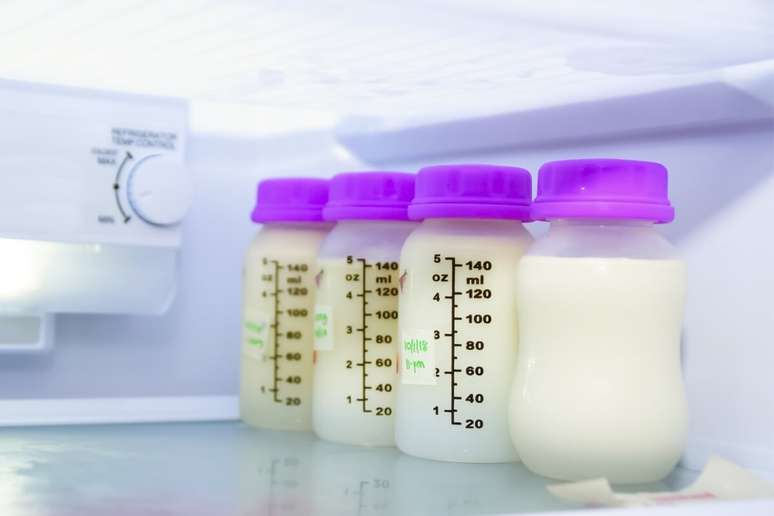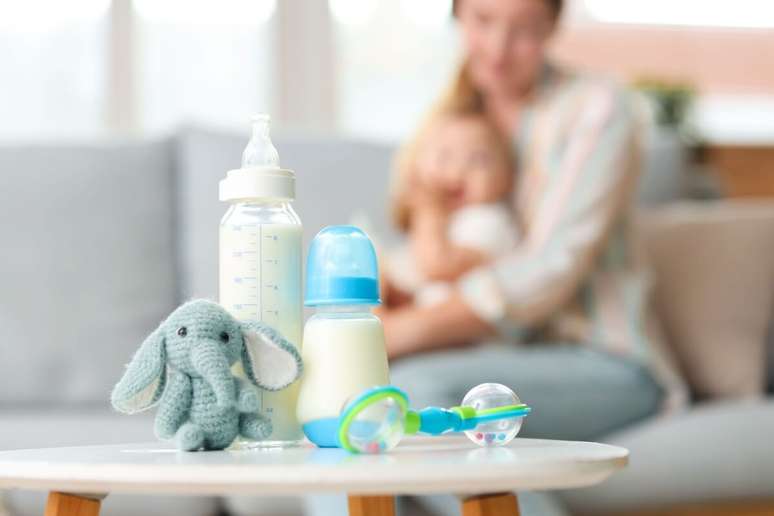The food is essential for the recovery of premature and low infants admitted in units of intensive neonatal therapy throughout the country
The donation of breast milk is an altruistic gesture that contributes directly to saving lives. However, during the winter, the number of donations decreases significantly due to several factors, such as the coldest climate and the most prisoner of people.
According to the Ministry of Health (MS), 193,000 breastfeeding women were responsible for the donation of over 245,000 liters of breast milk only last year. This was essential to increase the possibilities of recovery of over 219,000 premature and low infants allowed in neonatal intensive care units throughout the country in 2024.
According to Elisangela Bitttencourt, professor of the Anhanguera College nursing course, the act of nourishing the child with breast milk is beneficial for both the mother and for the childsince it helps to reduce the risk of diseases for the newborn. “Breastfeeding should be exclusive for the first six months of the child’s life and it is important to clarify that the milk contains everything the child needs for this phase of his development,” he says.
The expert strengthens that the donation is essential, especially in winter, since premature children or low weight, which are more vulnerable to infections and other complications, follow due daily needs. “Breastfeeding provides antibodies that help to strengthen the child’s immune system by protecting them from infections and diseases.”
Brazilian network of human milk banks
Elisangela Bittencourt underlines that according to the data of the World Health Organization (WHO), human milk is able to reduce up to 13% of the estimated deaths in children under the age of 05. Also according to the agency, Brazil has the largest and most complex initiative of human milk banks in the world, called the Brazilian network of human milk banks – RBLH -Br, and is a model for international cooperation in more than 20 countries in the Americas, in Europe and Africa, founded through the Brazilian cooperation agency (ABC).
The Ministry of Health and the Oswaldo Cruz Foundation created the Brazilian network of human milk banks in 1998 with the mission to promote, protect and support breastfeeding, the collection and distribution of human milk with certified quality and contribute to the reduction of childhood mortality.
How to donate breast milk
Elisangela Bittencourt recommends that, to donate, only the woman is healthy and does not take any medicine that interferes breastfeeding. “If this is your case, contact the Milk Bank closest to your home or call 136 for more information on how and when to donate,” he says.
The collection can be done home by any breastfeeding woman, regardless of the age of the child, following the following steps:
- Cover your hair, use the mask, wash your hands with soap and water and avoid talking during milk extraction;
- Use a glass bottle of glass that has been clean and boiled for 15 minutes from the moment of boiling;
- Remove the milk in the bottle, close it and write the name and date of extraction and bears the freezer;
- Bring the bottle to the nearest human milk seat within 10 days of extraction, inside a clean box or the thermal bag with ice.

Curiosity about breast milk
Below, Elisângela Bittencourt lists some curiosities about breast milk. Check!
1. Milk can be frozen
Breast milk can be frozen for a maximum of 15 days without the loss of its characteristics and nutritional quality. The mother can milk the milk at home that takes the adequate care to maintain the quality, leave it in the fridge and give the child while I’m away from home.
If the milk is not consumed, it can donate it to a human milk bank. In addition, the same process can be done in a human milk bank, in which the milk will be collected and frozen, then transformed and distributed to children.
2. The mother’s diet is reflected in milk
It is recommended that the mother has a Healthy and balanced diet. It should not drink alcohol, excess coffee and very fatty foods like chocolate. In the case of coffee and chocolate, the question is not to eat, but the quantity that is consumed. A coffee in the morning is part of our food habit and this makes no difference for the child, but it can influence it if consumption is performed in greater quantities.
3. Milk transports the characteristics of breastfeeding
Milk transports the characteristics of breastfeeding. Therefore, the child creates the antibodies necessary for his health by taking the mother’s milk. In the crossed assignment, there is a risk that an infectious disease is transmitted by milk. The departure to the mother who cannot breastfeed is to look for a guide in the human milk bank.
4. Stress and nervousness can interrupt milk production
Stress and nervousness can reduce the amount of milk. In moments like this, the mother modifies her endocrine-immunological system and therefore the amount of milk can decrease. It is recommended to rest the mother whenever possible. In the extreme case, to sleep well one night, he can let another guardian give breast milk to the child in a cup.
Some people believe that the stress Milk can strive, but it’s not true. This happens when the amount of milk is bigger than the child needs or can suck and, if not milk. In this way, the milk is housed in the breast and ends or even originated from mastitis.
By Dewerson Damasceno Dos Santos
Source: Terra
Ben Stock is a lifestyle journalist and author at Gossipify. He writes about topics such as health, wellness, travel, food and home decor. He provides practical advice and inspiration to improve well-being, keeps readers up to date with latest lifestyle news and trends, known for his engaging writing style, in-depth analysis and unique perspectives.







-t4ibkqt14qpk.jpg)
